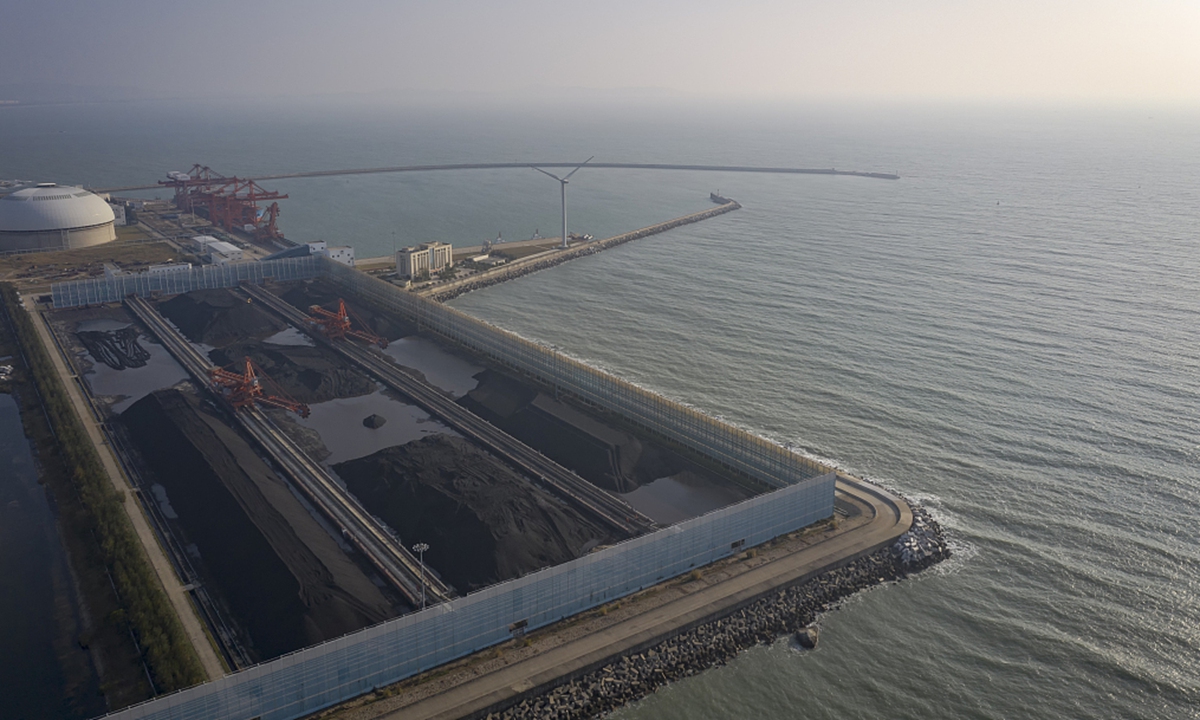
coal power plant Photo: VCG
Chinese provincial governments are encouraging more coal imports from Russia, Indonesia and Kazakhstan to resolve domestic market shortages.
In order to meet local demand, the State Grid Heilongjiang Hongxinglong Electric Power Bureau has increased electricity supply from Russia. From October 1, the bureau increased the operation time of the Heihe converter station that connects power transmission from Amur, Russia, and Heihe, Heilongjiang Province, from 5 hours to 16 hours a day.
The move alleviated power shortages, the State Grid said on Wednesday.
Russian coal and electricity exports to China are growing steadily in the past years and taking the market share formerly held by Australian coal, Lin Boqiang, director of the China Center for Energy Economics Research at Xiamen University, told the Global Times on Thursday.
"Most of Russia's coal reserves are close to Northeast China, meaning that importing coal from Russia can save transportation cost," he added.
According to the Ministry of Energy of the Russian Federation, in the first half of 2021, Russia exported 107.3 million tons of coal, a year-on-year increase of 9.8 percent. Exports to China reached 24.15 million tons in the first six months, compared with 16.2 million tons in the same period last year.
Russia is rich in coal resources. It is close to China geographically and has a good relationship with China, making it an ideal source of coal imports for China, Han Xiaoping, chief analyst at energy industry website china5e.com, told the Global Times on Thursday.
However, imports from Russia only account for a small amount of China's coal consumption, he noted.
"Given the cold climate in Russia, it has limited working time every year, and with China's goal to curb coal consumption, it is unlikely that Russia will set up new mining facilities to increase supplies to China," he said.
Other provinces have also called for an increase in overseas coal supplies. East China's Zhejiang Provincial Energy Group announced on Monday it unloaded 136,000 tons of high-quality coal imported from Kazakhstan, the first time that the province purchased coal from Kazakhstan.
Northeast China's Jilin Province is advancing coal imports from Russia, Indonesia and Mongolia, according to the provincial government.
Also, China is releasing Australian coal from bonded storage, Reuters reported on Wednesday, citing traders familiar with the matter.
A senior industry insider told the Global Times on Thursday that he was not clear about the alleged imports of Australian coal that some foreign media reported.
"China has diversified sources of supplies including Indonesia and Russia, which are the top and steady exporters of the natural resource at the moment," the person said.
Since China suspended purchasing coal from Australia, the market gap has been filled up by imports from Indonesia, Russia and Chinese local mines, though there is still a possibility of resuming coal imports from Australia, Lin said.
According to Chinese customs data covering the first eight months of the year, Indonesia remained the largest source of coal imports with a year-on-year increase of 19 percent. China's coal imports from the US soared seven times year-on-year, while imports from South Africa increased to 4.38 million tons last year.
In addition, coal imports from Canada, Russia and the Philippines were up 67 percent, 62 percent and 49 percent respectively, year-on-year.
This round of coal imports comes as a temporary measure and a supplement to China's coal shortage amid rising prices, Lin said, noting that imported coal only accounts for less than 10 percent of China's total consumption.
Coal and electricity supplies are expected to be tight in the near future, experts said.
To meet demand in the Chinese market, it is expected that the government will rely on measures such as encouraging coal mining, and raising electricity rates to ensure the supply of thermal power, Lin said.
In the long run, the government will continue to restrict coal use and shift to solar panels, wind turbines and nuclear power to cut carbon dioxide emissions, Han said.




